- Wondering how to get Monopoly GO! free rolls? Well, you’ve come to the right place. In this guide, we provide you with a bunch of tips and tricks to get some free rolls for the hit new mobile game. We’ll …
Best Roblox Horror Games to Play Right Now – Updated Weekly
By Adele Wilson
Our Best Roblox Horror Games guide features the scariest and most creative experiences to play right now on the platform!The BEST Roblox Games of The Week – Games You Need To Play!
By Sho Roberts
Our feature shares our pick for the Best Roblox Games of the week! With our feature, we guarantee you'll find something new to play!All Grades in Type Soul – Each Race Explained
By Adele Wilson
Our All Grades in Type Soul guide lists every grade in the game for all races, including how to increase your grade quickly!
Calculords Walkthrough
Calculords is a mashup of collectible card game combat and number puzzle matching from developer Ninja Crime. Gamezebo’s quick start guide will provide you with some tips and hints to help you survive the cold winters and harsh conditions.
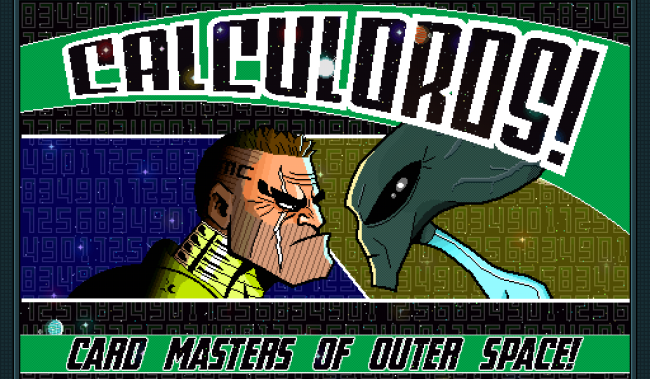
Game Introduction – Calculords
Calculords is a mashup of collectible card game combat and number puzzle matching from developer Ninja Crime. Gamezebo’s quick start guide will provide you with some tips and hints to help you survive the cold winters and harsh conditions.
Quick Start Guide
Getting Started
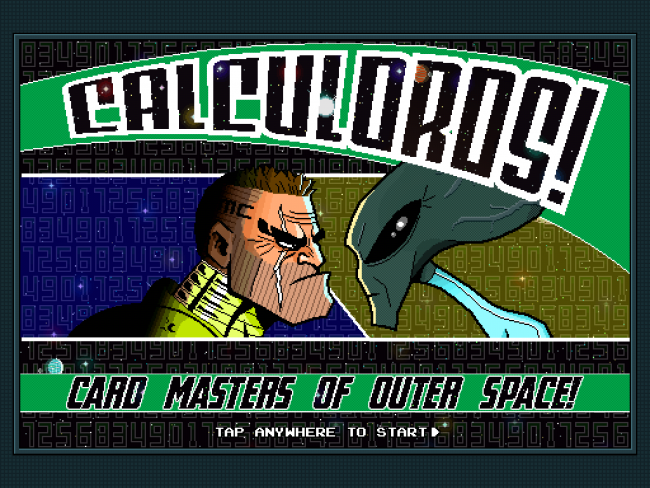
- Calculords can be purchased and downloaded by clicking the “Available On” options at the top of this page.
- When you start a new game for the first time, you will immediately be taken to “Gunny’s Tutorial.”
- This tutorial will teach you the basics of how to play Calculords before giving you the freedom to play the rest of the fight without instruction.
- Once you finish the tutorial, you’ll be taken to the main menu where you can start the main campaign, go to the deck-builder, or view in-app purchases. You can also replay Gunny’s Tutorial at any time by selecting that option from the menu.
How to Play
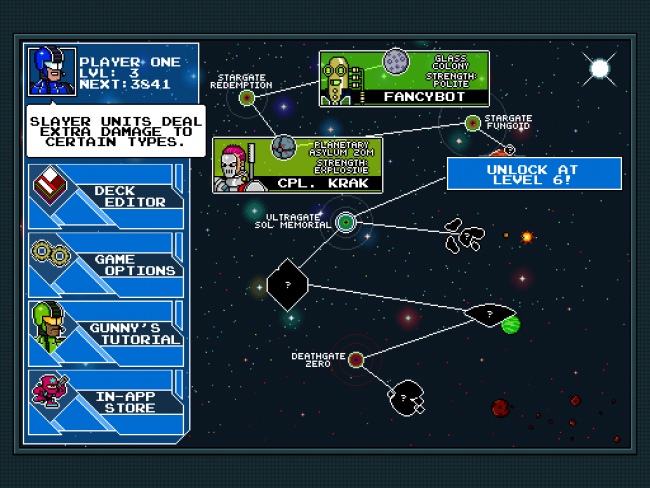
- Calculords is part collectible card game, part puzzle game. Each turn, you play a number of cards by multiplying, adding and subtracting semi-random numbers until they match the numbers associated with each card.
- When you place a unit card, it goes into one of three lanes. Each turn, those units will move forward along the lane. The objective is to reach the end of the lane to attack the enemy’s “headquarters,” which will reduce their health – eventually to zero.
- There are three kinds of cards in Calculords: push units, offensive units and tactics. Push units will push back offensive units in a lane and also hold them at bay when they attack. Offensive units walk forward and attack but have a great deal more attack points than pushers. Tactics are one-time-use cards that grant a special effect, usually in a single lane.
- When doing the math to summon cards, you will oftentimes use up every number in your calculator. That’s a good thing, as it grants an extra set of numbers to use on summoning extra cards that turn – essentially giving you a double turn. This bonus can only happen once every turn, however. Similarly, using up every card in your hand will draw a full, new hand of cards to play immediately.
- When you complete a match, you will be given a set of random cards. By going to the deck-builder you can add or remove cards from your deck based on the new cards you receive in battle. However, you must have at least 30 cards in your deck to use it in battle. Likewise, you can add or remove the numbers that will appear in your calculator. However, every deck must have at least one copy of the numbers one through nine.
Tips and Tricks
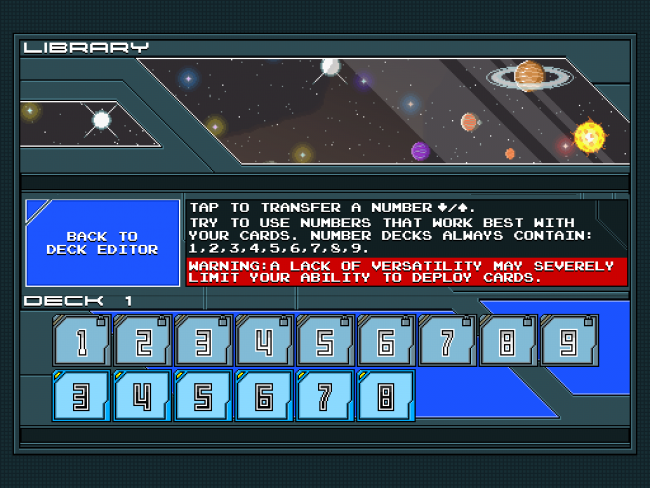
- Numbers in Deck-Building – Building a deck isn’t just about having the right mix of units and tactics; it’s also about the probabilities associated with the numbers on your calculator. For instance, if your deck has tons of even-numbered cards, it’s best not to keep your calculator clear of odd and prime numbers. This is perhaps the trickiest aspect of Calculords, so don’t worry if you don’t get it right at first. Just keep playing matches and see which numbers give you the most value every turn and adjust accordingly.
- Multiply by One – Removing every number from the board on your turn grants you a brand new set. Sometimes you’ll be able to achieve this just by summoning cards to the board, but more often you’ll have something left over. One easy trick to removing unused numbers is reducing the excess to one and then multiplying it by a number you can actually use to summon. You lose some extra summoning resources, but they refill as soon as you do it anyway so really you’re just giving yourself more options. It’s even possible to do this several times in one turn.
- Snowball One Lane – If you manage to clear each lane of the enemy’s presence, don’t spread your forces too thin. You only need to access the enemy headquarters from one lane to damage it, and if you can snowball a line of troops down one alley it’s often impossible for them to retaliate.
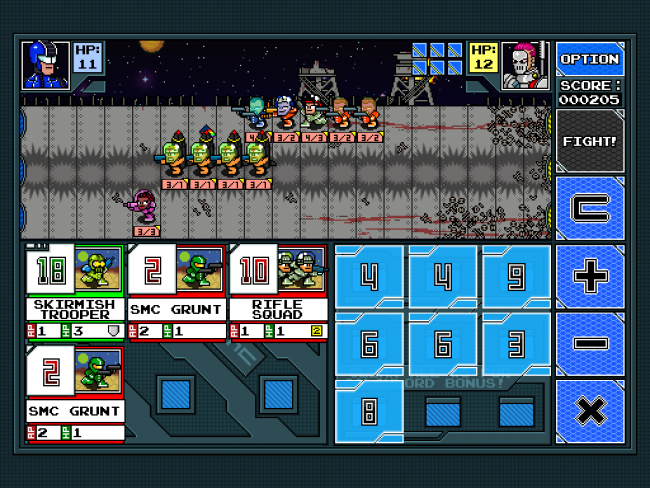
- Pusher Placement – Push-type units (green cards) usually have high health and little-to-no attack. They also often have armor that mitigates damage and, true to their name, will push back offensive units. Because damage (usually) doesn’t carry through units it’s best to put pushers in the front to attack as a wall protecting your gunners. Then, when you’ve played a good number of units, put pushers in the back of your lane to prepare for another wave of offensive units. Don’t, however, intersperse the two types randomly. You’ll only be leaving your offensive troops vulnerable to damage you don’t want to take and letting your pushers die for nothing.
- Let them Ride – Some units (usually bikers) have double the normal movement speed. If you can force the enemy to choke their forces down a single lane, you can drop bikers into open trenches to push on their headquarters very quickly. This has two advantages: it forces the enemy to use resources defending those lanes immediately, instead of guarding against your snowball lane, and it might allow you to get a few free hits on the enemy’s health before they reinforce.
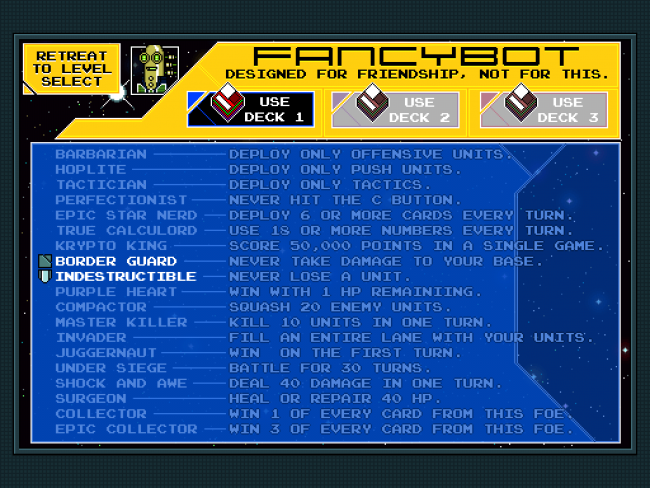
- Sometimes You Gotta Grind – Calculords has a high difficulty curve. You can mitigate this somewhat by purchasing the expansions in the in-game store, but even those require you to fight your way through bosses to earn cards. Leveling up has a huge impact on the flow of the game, however, as it not only improves your cards but the number of them that you draw and how many numbers you have to spend each turn. If you’re having trouble with a boss, dial it back to an earlier fight and try to max out your abilities.
- Shoot to Kill – Some tactics (the purple cards) will do direct damage to enemy units in a lane. Since there are only a limited number of cards that can be played each turn it’s best to use these when you’re guaranteed at least one kill. It keeps the enemy from building up their forces and gives you extra control over a lane without losing troops. Remember, though, armored units are usually still defended against tactics damage.
- High Health, Low Damage – Push units often have no damage-dealing abilities. However, certain tactics cards can buff your troops’ damage output. It’s often best to use these abilities on cards with high health and armor (like pushers) instead of offensive units. That’s because their high health lets them live longer and often get more shots off over time than a low-health minion. The exception to this is when you already have a wall of units up against an enemy’s headquarters, when it’s probably best to just ensure you get the final victory as quickly as possible.
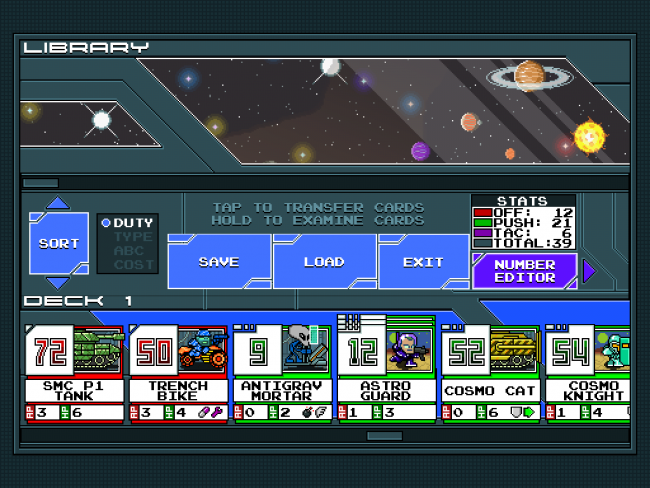
- Double Down – Some cards cast multiple copies of a unit. More often than not, however, these double-strength units have low starting health and should be protected. Rather than waste them defending lanes, try to put them behind an already powerful lane (preferably one topped with pushers) to increase its chance of snowballing.
- Spread the Push – Another great use for pushers is defending low-priority lanes. While you throw a ton of units down one trench to push to the end, put a single, high-health pusher in each other lane to slow enemy progress long enough to get the win elsewhere.
Congratulations!
You have completed Gamezebo’s quick start guide for Calculords! Be sure to check back often for game updates, staff and user reviews, user tips, forum comments, and much more here at Gamezebo!
More articles...
Monopoly GO! Free Rolls – Links For Free Dice
By Glen Fox
Wondering how to get Monopoly GO! free rolls? Well, you’ve come to the right place. In this guide, we provide you with a bunch of tips and tricks to get some free rolls for the hit new mobile game. We’ll …Best Roblox Horror Games to Play Right Now – Updated Weekly
By Adele Wilson
Our Best Roblox Horror Games guide features the scariest and most creative experiences to play right now on the platform!The BEST Roblox Games of The Week – Games You Need To Play!
By Sho Roberts
Our feature shares our pick for the Best Roblox Games of the week! With our feature, we guarantee you'll find something new to play!All Grades in Type Soul – Each Race Explained
By Adele Wilson
Our All Grades in Type Soul guide lists every grade in the game for all races, including how to increase your grade quickly!








 “
“